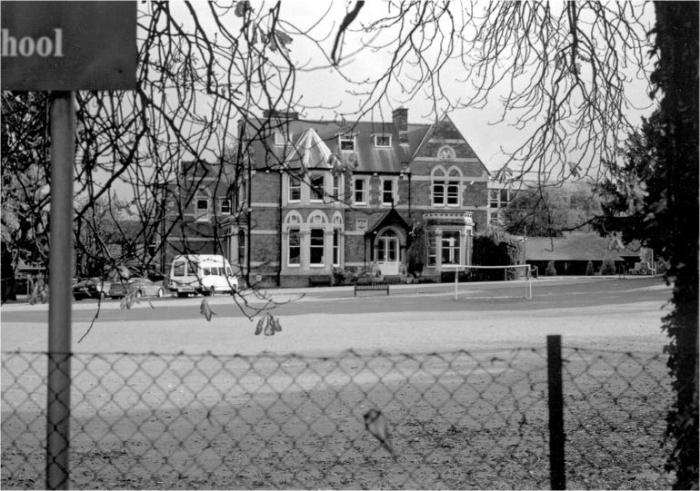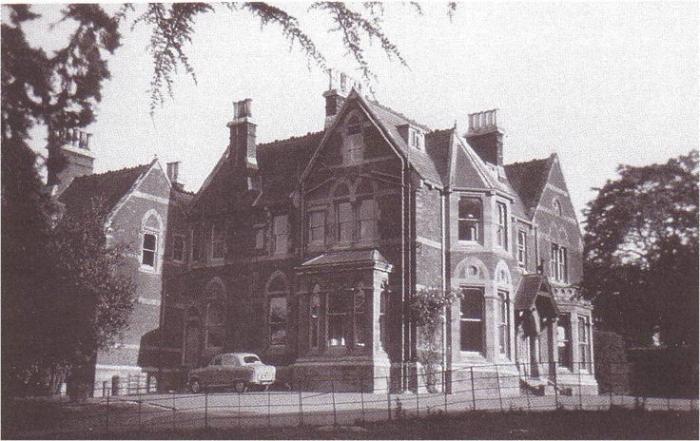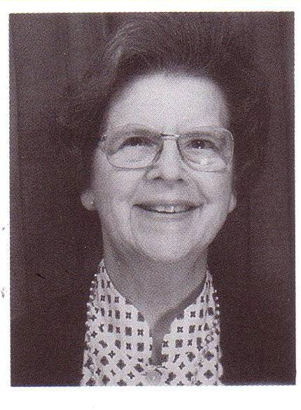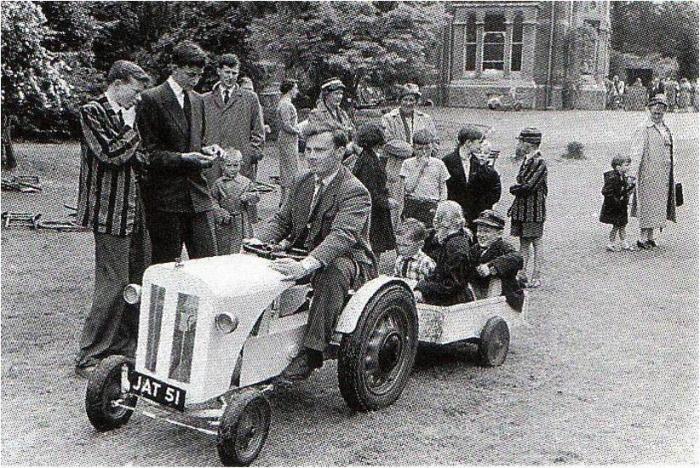Edmund Brookes
These reminiscences of the Perse Preparatory School, Leighton House, Trumpington, are based on a presentation at the meeting of the Group in April 2010.
See the introduction to education and schools for more information.

It is fitting that I have written this paper on the history of the Perse Prep(aratory) School in April 2010, as 2010 is the school’s centenary and preparatory is a key word. It is reminiscences of four very happy years from September 1958 to July 1962. Entry to the Prep was by competitive examination, which I had taken about 6 months before (on a Saturday afternoon, I must report, invigilated by Senior School boys!). At that examination, I remember that I had to take a short oral examination (during the written exam!) with Miss Carmichael. When I left the school in 1962, I went by competitive examination to the Upper School, which was then part of the Direct Grant System. My brother, Arthur, was also at the Prep School, following a year behind me. This paper looks at that happy time, with a few comments on the changes through to the present day.
The Perse Preparatory Department moved from Bateman Street to Leighton House in 1954, after some 44 years in Bateman Street. In the 1950s, the school’s resources were the house and a series of about 5 or 6 Nissen huts which dated from the War. For me it was a very happy time with wonderful teaching staff under Mr Lindeman (the Master-in-Charge and an Oxford man!), with classes of just 20 or a little over, compared with Miss Burgess’s 40 pupils in my last year at the Fawcett Infants School. (Miss Burgess had also taught at the Church School).
The reason the school moved to Trumpington Road was that the lease on Bateman Street had very few years to run and a more permanent and more substantial location was required, as Bateman Street had become very overcrowded. Leighton House, previously the home of Mr Robert Sayle, proved the ideal site. The House had been requisitioned during the War and it was offered to the County Council by the Ministry of Works when no longer required. Fortunately the Council did not take up the offer and the Perse Governing Body swiftly made an offer of £12,550 which was accepted. The remaining lease on Bateman Street was sold to the Davies School of Language for £3,361 and the school borrowed £10,000.
The purchase was made in February 1954, leaving just 6 months to prepare the buildings for their future use as a school. The Headmaster of the Perse School then was Stanley Stubbs, a visionary head who was well ahead of his time (even if we thought him slightly autocratic) who had come to the Perse via Gresham’s School, Holt, and Soham Grammar School after a career in industry (Wedgewood if my memory is correct). The RS (Robert Sayle) monogram over the front door – through which pupils were not allowed to pass – was swiftly changed to PS (Perse School) with the aid of a masons chisel! Few alterations were needed and the school brought much of its equipment from Bateman Street. It was of course the early post-war era and some things were still rationed.
When the school took over the site in 1954, there were the iron railings to keep children off the park as the grounds were still rented out, but the railings had gone by September 1958 when I arrived.

The accommodation was unchanged in 1958 and comprised 7 classrooms (4 downstairs and 3 upstairs). The Master-in-Charge’s study, Staff Room and dining hall were also on the first floor, with a grand staircase. The school was a single stream entry in the first year, expanding to two forms in the second year. The Nissen huts provided a Games Room, Hall (which doubled as a gym for PT), Cloak/Changing Room and Toilets, and Crafts Room. The final hut was used as a bungalow by Mr Wagstaff, the Upper School Head Groundsman, until his purpose-built bungalow was ready in 1960 at the Upper School, when the hut became a Music Room. Mr Fitzgerald (who lived in the attic) was the caretaker and he stoked the coke boilers (I never remember feeling cold). A covered passageway linked the back (pupils) entrance with the huts. Other facilities were a large conservatory which Mr Lindeman used and a Summer House where swallows regularly nested.
Since my time, the facilities have been progressively improved and expanded. A major new block was opened in 1976 and a substantial block was built to the right of the main house in 2009, clearly visible through the horse chestnut trees (I do hope they survive the current disease).
The grounds were a great attraction, with the row of horse chestnut trees (especially good for the conkers in autumn) and many specimen trees which still grace the site. The playground in front of the house sloped steeply and we wetted this in cold weather to make slides! Whenever we were allowed, we would run freely around during playtime and hide in the bushes adjacent to Trumpington Road. As this was the days of National Service, an Royal Naval detachment was located on the site of Porson Court. They were human guinea pigs for the research facility in Chaucer Road. The matelots had time on their hands and would often help referee sports for us. A policeman attended the school to show pupils across the road at 3.20 pm to catch the 115 bus into town. My great friend Julian Davies made his own way by train from St Ives, walking down Bateman Street and catching the bus.


The first year was called Form 2, a single entry, with Miss Carmichael as the teacher. (She only died in the mid-2000s.) In the second year, there was a second entry and we had forms 3A and Alpha (the domains of Miss Bedford and Mrs Spence respectively), 4A and Alpha and 5A and Alpha, followed by the 11+ and Upper School Entry Exam taken in Forms 5. We called all teachers “Sir” except Miss Taylor who also specialized in Art and Nature Study. She was sadly killed in a car accident in Scandinavia while I was at school. Mr Stubbs in his visionary way encouraged teacher exchanges and we had overseas teachers for a year. They were all extremely kind and encouraged us. Classes were then more structured at an earlier age than in junior schools, but it worked for us.
In those days, Forms 2 and 3A/Alpha had Wednesday as a half-day, when forms 4 and 5 did crafts/music, etc. We were at school on Saturday mornings without fail. What in those days was considered revolutionary was that we studied French from the age of 9 and had quite a lot of homework. In the 4th and 5th forms you had two pieces, one of which you were expected to do at lunchtime while the other half of the school had lunch, but as Arthur and I went home for lunch, we did both at home.
Arthur and I always walked to and from our home in Shelford Road to the school but took the 115/103 bus home for lunch within the allotted 1 hr 30 minutes. The fare was 1½ d each way and the bus was always reliable. In my last year, I used my bicycle in the afternoon and in the last term also used it in the morning, getting ready for the 8 miles a day I cycled to and from the Upper School. I remember walking in the autumn fogs which were quite prevalent then and the streets were gas lit. The only time we had school lunch was when the Royal Show was on and it was suggested we stay at school, which we did. That was my first experience of traffic jams, with the roads blocked solid, I also gave up my bed to lodgers!
The whole school did sports on Monday and Friday afternoons (football in the Autumn and Winter terms and cricket in the Summer term), when Forms 4 and 5 walked to the Upper School site. Mr Smith (I believe a Cambridge City coach) took the top football team and also gave us all two periods of PT a week, on Tuesday and Thursday mornings. He drove a black Ford Popular. Our PT included running round the block and boxing as well as conventional exercises with medicine balls. Mr Lindeman took each class once a week, usually for Religious Study, but this did include some Stamp Collecting. If we had done a piece of particularly good work, we were sent to see Mr Lindeman and rewarded by a sugar sandwich! Mr Stubbs visited in the morning, once a week.
The grounds were maintained by the Upper School staff. In the summer, PT was often outside in the lovely grounds and we held the Sports Day at what was then Peterhouse Playing Fields in Porson Road. Voluntary swimming classes were held at the Leys baths on a Wednesday evening before the Upper School session. They were taken by Mr Davy, the Sports Master at the Upper School. I did not learn to swim until I was 8 or 9. Parkside Pool was not even thought about then, and there were Nissen huts on the site there.
Every Friday morning, the first period was a service and on the first and last Friday’s of term the Trumpington Vicar took the service. Miss Clark (4 Alpha) played the piano. In those days, the vicar was the Reverend David Maddox, though we had a very tall Canadian curate, Doug Woodhams, who repeatedly hit the simple plastic light shades on the low stage. We sat cross-legged in lines on the linoleum floor, with our teachers on hard chairs on the right side.
School was competitive, and why not, both in the classroom and on the sports field. Apart from significant end of year exams, we had Monthly Marks (or Monthly Murders as we called them) twice a term. You had to stand while Mr Lindeman told the whole class how you had done (or not as the case maybe) and it included 10 marks for behaviour. The top boy always stood first!
I do not remember feeling stressed and consider I thoroughly enjoyed my four years at Leighton House. We had good and firm but kind teachers and I am still friends with Miss Bedford. I suppose the teaching was simple compared with today but we just got on with it. Outings were few. I remember, having come top of the class one term, been invited to join the Cubs outing to the Empire Pool Wembley in an Eastern Counties white long distance coach, to see “Snow White on Ice”. Somehow we afforded it (12/6d). Mother also took a party of us in our Bedford Utilabrake (RMN 992) to visit Denny Abbey, long before it was open to the public.
Form prize winners attended the Upper School Speech Day where the winner of the Form 2 prize got the loudest applause of all. I won the 4 Alpha and 5A form prizes. We had 10 shillings to spend on a hard-backed book which the school had embossed. In my last year (Form 5A) they discontinued the embossing and gave us an extra 2s 6d. We went to selected bookshops and they processed it to the school. The second book I received was from Leslie Caron who was then married to Peter Hall. I remember her bright yellow suit and pill box hat
The Perse is remembered for its uniform, short trousers and caps until (in those days) the 5th Form at the Upper School. In summer, on Mondays and Fridays you could go to school in white cricket shorts and blazer with the distinctive crest! Shoes had to be lace up and black, and polished – even for the Fete. Some Americans once took a photo of Arthur and myself going home – they thought it so cute!

Happy days they certainly were, even though I was slightly bullied: the bullies had to go and apologise to my parents, when it was sorted out and did not recur. I suppose my experience was typical of prep schools in those days, a fairly structured regime which worked. We had boarders, but did not take Common Entrance like St Faiths because entry to the Upper School was at 11. In the summer of 1962, I move along Long Road to Mr Parry ‘ s Class at the Upper School, and Arthur followed me a year later.